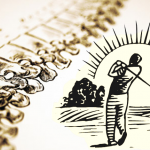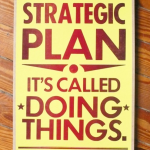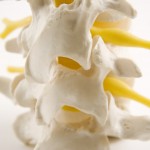
Your core – the muscles around your abdomen and pelvis – is a pivotal area of the body to keep in shape. Why? Because the core is a key player in whole-body health, pure and simple. Think of your core muscles as the sturdy central link in a chain connecting your upper and lower body.
When you become more sedentary, you inherently become less flexible. Your muscles shorten and become weak from inactivity, making you prone to injury. In addition, weak or inflexible core muscles can impair how well your arms and legs function (remember it’s your central link). This will in turn drain power from many of the moves you make. Properly building up your core makes all of your daily movements easier. A strong core also enhances balance and stability. Thus, it can help prevent falls and injuries during sports or other activities. In fact, a strong, flexible core underpins almost everything you do:
- Everyday acts. Bending down to put on your socks or to pick something/someone up, turning to look behind you, sitting in a chair, or simply standing still – just a few of the many actions that rely on your core and that you might not notice until they become difficult or painful. Even basic activities of daily living – showering or getting dressed, for example – move through your core.
- Work. Jobs that involve lifting, twisting, and standing all rely on core muscles. But less obvious tasks – like sitting at your desk for hours – engage your core as well. Computer work can make back muscles surprisingly stiff and sore, particularly if you’re not strong enough to practice good posture and aren’t taking sufficient breaks.
- A healthy back. Low back pain episodes (affecting four out of five Americans at some point in their lives) may be prevented by exercises that promote well-balanced, resilient core muscles.
- Athletics. Golfing, tennis or other racquet sports, biking, running, swimming, baseball, volleyball, kayaking, rowing and many other athletic activities are powered by a strong core.
- Balance and stability. The human body needs to be conditioned entirely to build balance. Without balance, there is imbalance, and truthfully that is where most injuries occur. Your core stabilizes your body, allowing you to move in any direction without losing your balance.
- Good posture. Weak core muscles contribute to slouching and poor posture. Good posture lessens wear and tear on the spine and allows you to breathe deeply.
Weak, tight, or unbalanced core muscles can undermine you in any of these realms. And while it’s important to build a strong core, it’s unwise to aim all your efforts on one area of the body. Overtraining abdominal muscles while ignoring muscles of the back and hip can set you up for injuries and limit your physical performance.
Fortunately, training the core is easy; so easy, in fact, that you don’t need a gym membership, fancy equipment or anything else except your own body and a little space. Here are three bodyweight-only exercises guaranteed to work your core and improve your overall health in no time:
The Plank: Position yourself of the floor in a push-up position, except instead of using your hands for support, use your forearms. Keep your back as straight as possible, elbows even with the shoulders. Look straight down, not to the side or out in front of you (this will strain your neck). Hold the position for as long as possible (as little as 10 seconds is fine the first time out), and build up to 30, 45, 60 seconds or longer. To make this exercise more challenging, you can raise one arm off the ground, straight out in front of you for a few seconds; or do the same with the legs, lifting each off the ground for a few seconds.
The Glute Bridge: Lie on your back on the floor with your knees bent. Squeeze your glute muscles (buttocks) as you push your hips up off the ground. Stop pushing when you can visualize a straight line from the knees and hips to the upper body. Keep your shoulders on the floor and make sure your low back is not overly extended. Concentrate on squeezing the glute muscles and keeping the abs tight throughout. Try to hold the bridge pose for up to one minute; once you’ve mastered that, you can do multiple one-minute sets.
The Bent-Leg Knee Raise: Lie on your back with your head and neck relaxed. Grasp something heavy (a piece of furniture, etc.) with your hands, which should be above your head. Now use your lower abdominal muscles to raise both knees up toward your rib cage / face, then slowly lower down to the starting position and repeat as soon as your feet touch the floor. Make sure you do not “roll up” too far as you bring the knees toward the chest; it will stress your lower back. Start with a few repetitions and build to 12-15 per set.
References:
http://www.health.harvard.edu/healthbeat/the-real-world-benefits-of-strengthening-your-core
http://www.toyourhealth.com/mpacms/tyh/article.php?id=1490







